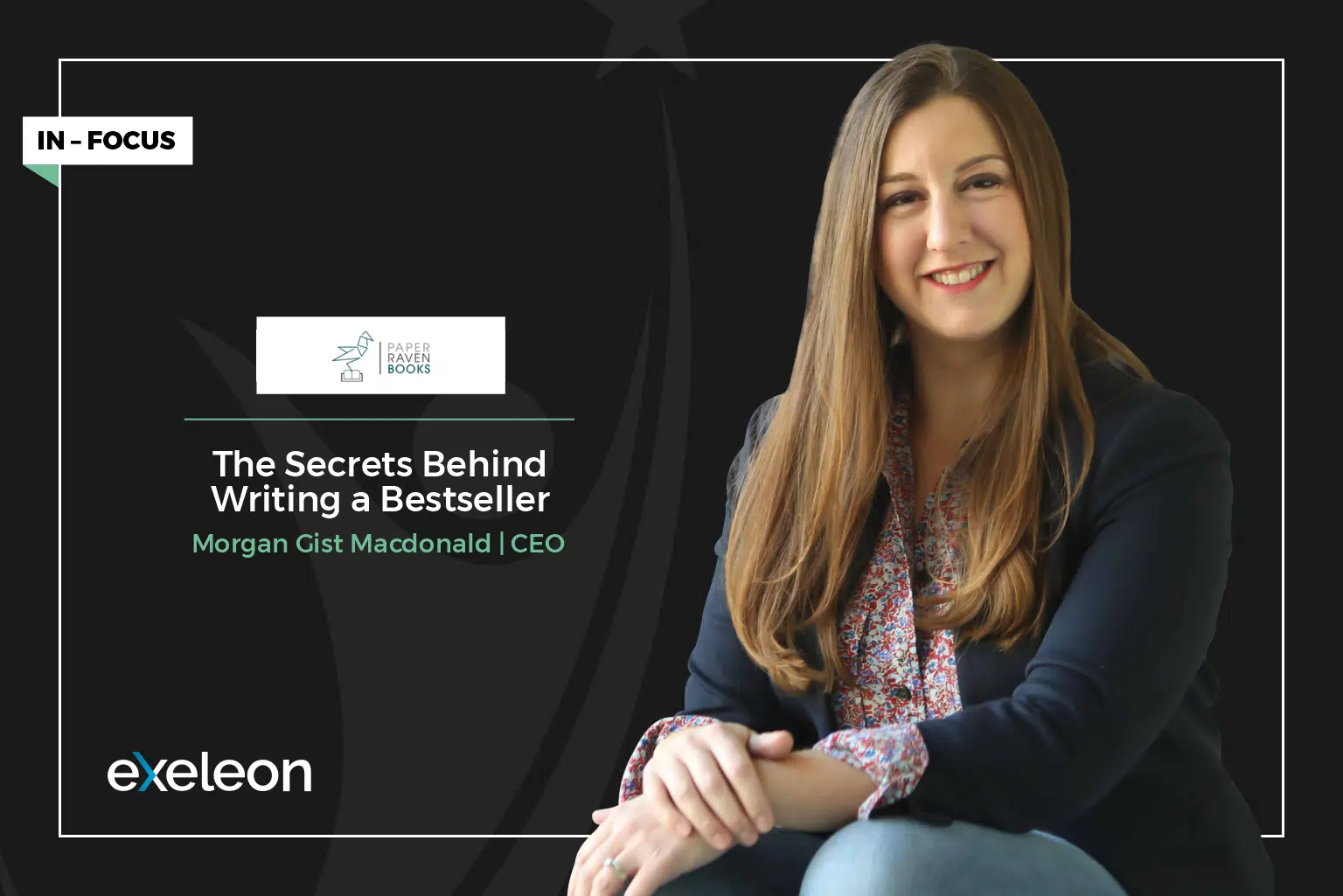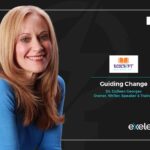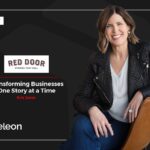
Learn the proven strategies and secrets of successful authors as Morgan Gist MacDonald of Paper Raven Books shares the path to writing a bestseller.
With a wealth of experience and a deep understanding of the publishing world, Morgan and the team of Paper Raven Books have forged a reputation as a leading publishing company.
Drawing from her extensive knowledge and the wisdom gleaned from working with countless authors, Morgan Gist MacDonald shares the proven strategies that are needed behind writing a bestseller.
From studying sociology to becoming an author to now launching over 100s of books through your publishing company. What has been this journey like for you?
Growing a service-based business in an industry that is changing rapidly has challenged me to create entirely new best practices and success paths for my authors, from the ground up.
20 years ago, there was no such thing as a book coach. If you pitched an idea for a book to a traditional publisher and were accepted, you’d work with the publisher’s acquisition editor while you were writing your book.
Once people were able to self-publish, though, they still needed that help in developing a manuscript, so they started looking for professionals who could help with actually structuring and writing a book. When I started, that’s exactly what I was doing, helping people to organize, write, and develop the content of their books.
Then, my clients started asking me to help them publish their books. I knew how to write a book and how to edit a book, but I really didn’t know anything about publishing and marketing. So, I wrote my own book and went through the self-publishing process, tried dozens of different approaches to marketing, and I optimized the process as I went along.
Now, I’ve developed best practices and systems and grown a team of editors, designers, formatters, marketers, and project managers, who all work together on the 50+ books a year we launch at Paper Raven Books. And with every single book we launch, we look at what’s changing in the industry, what are still best practices, and what pieces can be optimized to create even better sales, rankings, and reviews for our authors’ books.
Writing a book can be a daunting task and extremely overwhelming. Talk to us about your own experience writing your first book.
When I started writing my own book, I’d recently had my third baby, so I was typically awake for a 4 am feeding. I would stay up and write from about 5am to 6am, when my other two children would wake up and be ready to start the day. I spent a couple of weeks just developing the structure of the book, and then I wrote the first draft in those quiet early mornings for about two months.
Fortunately, I had worked with enough clients through writing their books that I felt fairly confident that if I could get something like 30 or 40 hours of writing time in, that would be enough to develop a solid first draft, that I could then revise and publish.
For most of the writers my team and I work with, if we can help them create a structure in the beginning, and then optimize each writing session, something like 40 hours to 80 hours of writing time is enough to write a first draft that would then go through a few rounds of revisions before being ready to publish.

As a first-time author, how can one gain visibility and attract media attention to boost their overall sales?
The place where most readers discover new books is the Amazon bookstore, so we recommend that first-time authors focus on optimizing the book’s sales page on Amazon. Choose a launch week, where you’re going to put the ebook on promotion (free or $.99), and gather a launch team of 50 people who are going to download that ebook and leave a review during your selected launch week.
We also recommend reaching out to book promotion sites (like cravebooks.com) to let their lists of readers know about the new book that’s running an ebook promotion.
When you can stack a couple hundred sales or downloads of an ebook in a short amount of time, it’ll pop the title to the top of the category, which will increase the visibility of the book. Now, you’ll want to select your book’s categories carefully. In the Amazon bookstore, ebooks may select 10 categories, so we recommend first-time authors find very niche categories that are nested inside of larger, relevant categories.
For instance, if you’re writing a book on leadership, you could launch the book in the very large, highly competitive category of “Business & Money.” The problem is that if your book is not doing well, relative to the other books in that category, you’ll fall in the rankings, and Amazon’s algorithm will push your book to the bottom of the category.
However, if you launch your book in a smaller category that’s nested inside of Business & Money, you’ll have a better shot of doing well, relative to the books that are specifically categorized there. So, if you could choose this category: Business & Money > Entrepreneurship & Small Business > Entrepreneurship.
Your book is then launched inside of the smaller category, “Entrepreneurship,” which only requires 91 downloads or sales to become a #1. Now, hitting #1 in a category is fun, and, more importantly, it triggers the Amazon bookstore algorithm to show your book widely in the next category up, in this case, “Entrepreneurship & Small Business.”
With this type of strategy, you’re triggering the Amazon algorithm to show the book more widely in increasingly more competitive categories, so you can get visibility for your book in those larger categories.
Once your book has at least a thousand downloads or sales, a few #1 rankings, and 50+ reviews, now any additional promotion you do for the book is more likely to be effective. Most people who find your book online or hears about your book on a podcast will look at the Amazon sales page before they buy, so we want to make sure that sales page is a high-converting sales page that’s stacked with sales, #1 rankings, and great reviews.
What according to you are the three biggest mistakes authors make that impact their long-term sales and visibility?
First, authors tend to forget to think about how readers actually buy a new book. These days, most readers are going to the Amazon bookstore to buy books. More than 70% of books (eBooks, physical books, audio books) are bought through the Amazon bookstore.
When authors are developing a book idea, they tend to go into what I would call an “untested market,” meaning they haven’t identified what readers are searching for in a book like this. Reader’s search patterns are especially important. For instance, when readers go to the Amazon bookstore and search for a book, are they really typing in something like “business book?” Or are they typing in something that’s a little more specific to their situation, like “business lessons about failure.” Turns out, when you do the research into keywords, “business lessons about failure” is searched approximately 1,214 times per month, currently, with only 84 other books listed with that keyword phrase. One of the tools we use to do this is Publisher Rocket, and there are other tools, too.
In the context of bringing a new book to market, what this means is that if you tag your book with the keyword “business lessons about failure,” the book will be served as a search result to 1,200 people every month—and not just people, book buyers who are actively searching for a book like yours!
Steven Adjei is an entrepreneur, healthcare consultant, author, and poet. When he released his book, Pay The Price, others had recommended he simply publish a business book and try to get it into bookstores, like everyone else. Steven had some innovative ideas in his book, including stories about ethics in entrepreneurship, passion and pain entrepreneurs encounter in their journey, plus motivational poetry woven in and a companion playlist available for free access. When we helped Steven publish and launch his book, we tested the market, searching for keyword phrases that would put his book in front of the right readers, keyword phrases that included “business” and “entrepreneurship,” yes, but also “ethics,” “passion,” “pain.” You can test the market of your book, ahead of time, by seeing what your ideal readers are searching for in online bookstores.
The second mistake most authors make is not having a clear way for the reader to become their customer, which I refer to as an “untested customer journey.”
In the book world, by default, the readers who purchase a book are customers of the bookstore. Amazon, Barnes and Noble, and any independent bookstore will happily accept the payment and customer information from a book buyer and never release that information to the author of that book.
For many authors, though, being able to contact those readers is the best way to grow an author brand and base of fans. Whether you would like those readers to become clients for your back-end products and services or simply continue buying the books you release every year, it’s so much easier for an author to grow when they have a tried-and-true customer journey from one book into the bigger business.
When Dr. Terry Pease published and launched her book, Love, Dignity, & Parkinson’s, we helped her include a companion workbook and journal that a reader could access for free by scanning a QR code. Now, every person who scans that QR code and provides their email address, Dr. Pease is able to reach out to and offer additional coaching to, inside her business.
The third mistake most authors make is actually in the writing part of the process, especially because most of us were never taught how to structure a book and write 40,000+ words that transition smoothly from chapter to chapter in a compelling narrative arc.
For many authors, writing a book is a little like dumping information onto a page and hoping the reader can follow. I call this an “untested concept.” The author has accumulated a lot of ideas, experiences, and stories, but putting them all in one book does not always make for a great reader experience.
When Dr. John Martin first wrote his book, Psychology Confidential, he wanted to provide the reader with a collection of funny, poignant, touching stories from his career as a psychologist and professor. Many of his patients and students had had clarifying moments by learning psychological principles, and he wanted to create a story-telling version of that experience. To his credit, Dr. John had many, many stories that he could draw on. And where our book coaching team helped was to curate those stories and craft a compelling structure that guided the reader through a series of experiences, chapter-by-chapter. Dr. John’s book is a fantastic read, in itself, and he is frequently requested to campuses and events to tell more of his stories to students, faculty, and folks interested in how psychology informs life.
So, those three together, if you can test your market, customer journey, and content, will help any writer develop a book that will sell, grow your business, and create a lasting impression for your readers.
How is Paper Raven Books helping authors gain visibility, market their book, and most importantly, find customers?
At Paper Raven Books, we help our authors to self-publish professionally. Our team of book coaches, editors, designers, formatters, marketers, and project managers work with authors, one-on-one, to write, publish, launch, and market their books. Our authors are truly self-published, which enables them to retain the creative vision, legal rights, and profits from the books.
And we bring our 8 years of experience and best practices, so that we can help the author get the most of their book. We help to make sure the book fulfills the author’s intention to serve a specific type of reader, who could then work with the author in a deeper way. We help to create a customer journey, so that those readers can easily become a client or customer of the author.
We help to optimize the book for visibility on the Amazon platform, so that even people who are discovering the book for the first time are eager to buy the book and leave a review, which builds the foundation for the books’ long-term sales. Paper Raven Books helps its authors get on to podcasts and other peoples’ platforms, so they can spread the word about their book, mission, and message.

As the Founder and CEO of Paper Raven Books, what role do you play in the day-to-day proceedings of the company?
I am involved in architecting each piece of our customers’ journeys, from the ads they see for our company, to being invited to a workshop, speaking with one of our sales reps, and then choosing a package that fits their publishing needs.
I meet with a few clients each week, I host an all-client meeting once a week, and I meet with each department, to make sure they have what they need to serve our clients to the best of their abilities.
What do you think is the future for the publishing industry? What role do you think modern technology will be playing?
I believe that direct-to-consumer sales is the future for most authors and readers.
Right now, we buy eBooks through Amazon because so many of us have Kindles. What if we were able to buy eBooks from any website and instantly, easily drop those eBooks to our e-reading device? That would massively disrupt Amazon’s hold on the book market.
At the same time, I believe that many readers will still want to go to bookstores, not necessarily to purchase specific books, but for that experience of browsing through bookshelves and discovering something new, surrounded by the smell of paper, the sound of an espresso machine, and the buzz of being around other book lovers.
Right now, bookstores simply sell books. I wonder what it could look like to be a member of a bookstore, able to browse and while enjoying beverages, as much as you wanted. And when you find something you like, scan a code and have it delivered to your device or your door at the same hour. Something like that could be very possible with open-source e-readers, audiobook apps, and print-on-demand.
Not to mention NFTS, Web 3.0, and all of the technology that’s allowing peer-to-peer exchanges. Much of that has yet to be proven in the broader marketplace, but there’s a lot of excitement about what’s possible with new and emerging versions of books and bookstores.
So, yes, I’m excited about the future for authors, readers, publishers, and bookstores—it’s a whole industry, filled with people who love books.
Important Links:
Visit Paper Raven Books Website.









